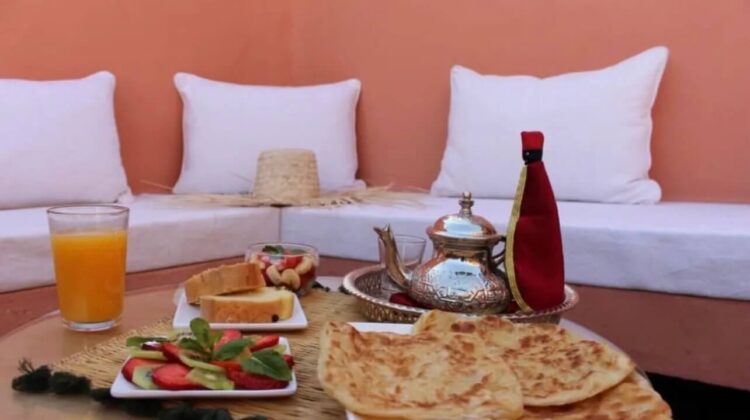
Moroccan cuisine is known for its rich blend of flavors and unique culinary traditions. One of the most cherished meals of the day in Morocco is breakfast.
A Moroccan breakfast(lftour) is a true reflection of the country’s diverse culture and offers a mouthwatering array of dishes that awaken the senses and set the tone for the rest of the day.
Let’s dive into the delightful flavors and dishes that make up a traditional Moroccan breakfast.
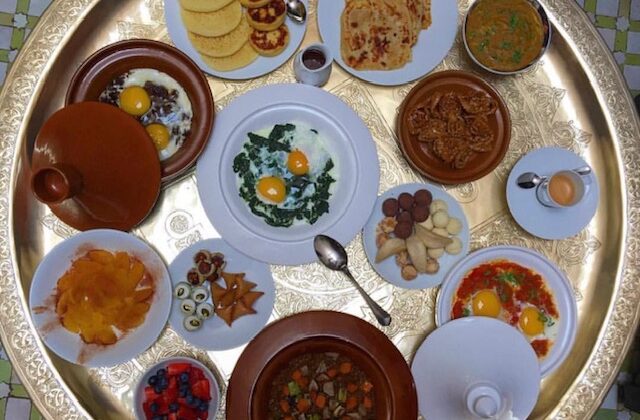
Table of Contents
Bread
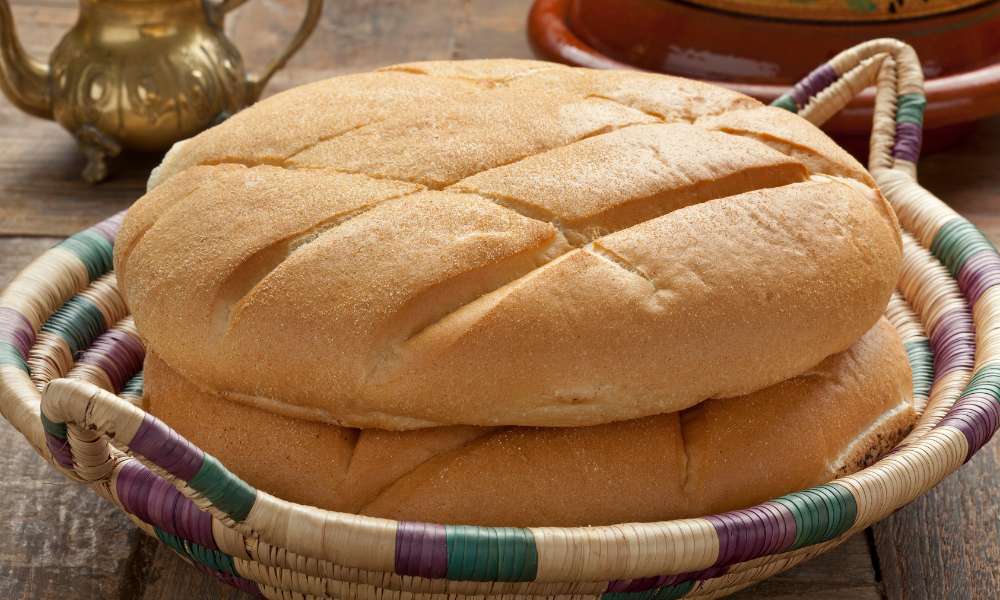
Bread is the cornerstone of Moroccan cuisine. It is practically everywhere. Bread has always played such an important role in Moroccan life that they even have communal ovens where people can bring their own dough and bake it themselves.
Today, in this modern lifestyle, where you can find a bakery in every neighborhood that does all the work for you, the popularity of these public bakeries has decreased. However, there are still people who bake bread at home.
You can choose from a variety of Moroccan bread. The most basic one, if you visit Morocco, you will find one on every street corner, it is the “Khobz” (Moroccan bread).
It is worth mentioning that Khobz is just a generic Arabic word for any type of bread. In Morocco, however, it usually refers to that specific type of bread roll that is eaten every day.
The khobz can even replace cutlery: the outer shell is used to catch all the food on the plate, whether you’re eating salad, tagine, or something else, while the soft interior is perfect for dipping in sauces or oils for breakfast
Why do you need a fork and spoon if you have a slice of freshly baked bread?
Olive oil and cheese:
What do Moroccans eat for breakfastThis is another staple food used on Moroccan breakfast tables. In Morocco, Moroccan olive oil is so popular that every family has large quantities in their pantry to make sure they never run out.
Moroccans often have this for breakfast, This oil must be 100% pure. They used a small plate to pour a little olive oil. Some even add cheese. They are all eaten with bread.
The “baghrir” (pancakes with a thousand holes)
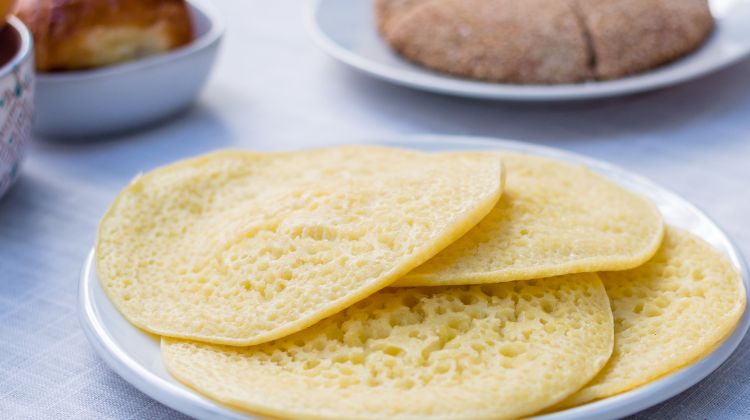
These pancakes, made with a dough of semolina, flour, and baking powder, are
cooked on one side only. Dozens of small holes are then formed on the surface.
Light and melting, the baghrir is served hot, traditionally brushed with a generous mixture of butter and honey previously melted.
Thanks to the tiny sponge-like holes, the baghrir is full of flavor and sweetness: an irresistible way to start a new one!
The “Harcha”
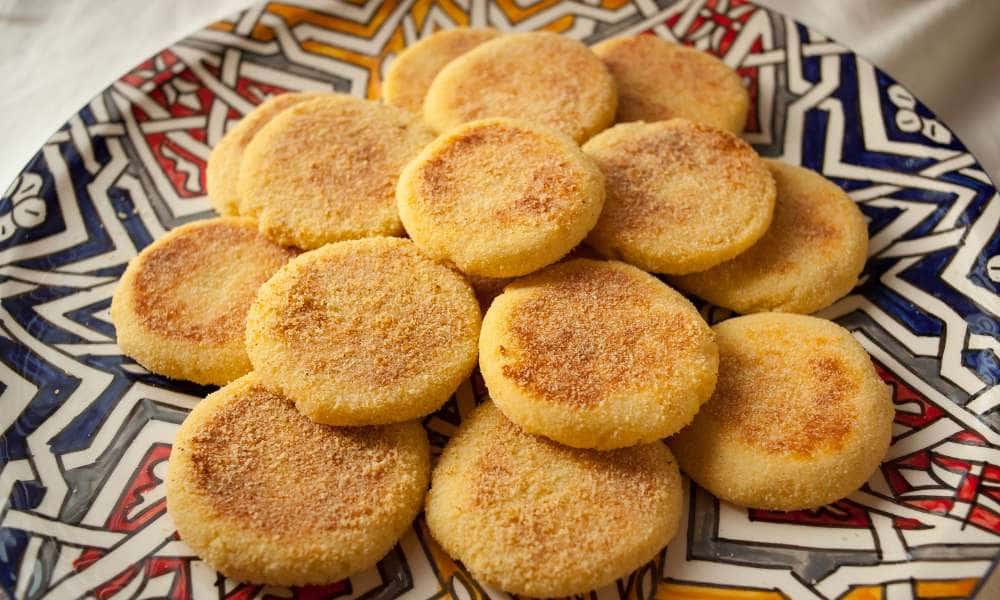
These lightly sweetened pan-fried pancakes come in two basic forms: large discs cut into small pieces or individual mini cakes. They are made with semolina and baker’s yeast, as well as butter and milk.
Result: Unique texture, very lightly sanded, the surface is both melted and rough.
They still taste a bit warm, with butter and honey, or La Vache Qui Rit or KIRI: you can find this French cheese everywhere, and it is very successful in Morocco, even in the most remote places.
The “Msemmen”
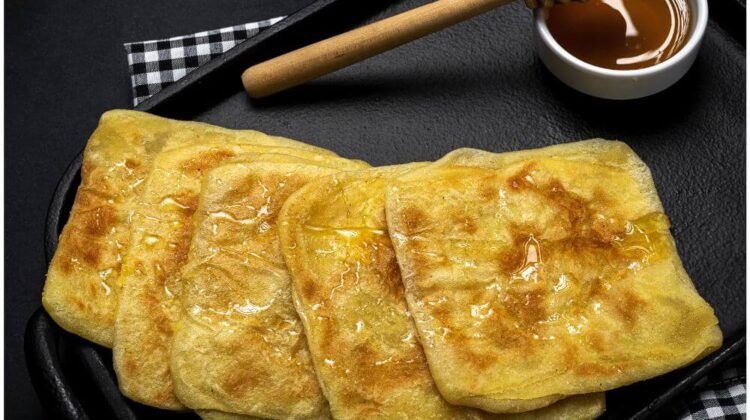
Breakfast is sometimes the occasion to taste the msemmen. These thin, fluffy and delicate puff pastry squares are made with semolina and/or dough made of flour, salt, and water.
Roll out thinly, brush with a mixture of oil and melted butter, fold a few times to form a puff pastry, and bake in a cast iron or non-stick pan.
Like baghrir and harcha, msemmen are usually served with the inevitable butter-honey duo. Enjoy the cast iron!
Amlou
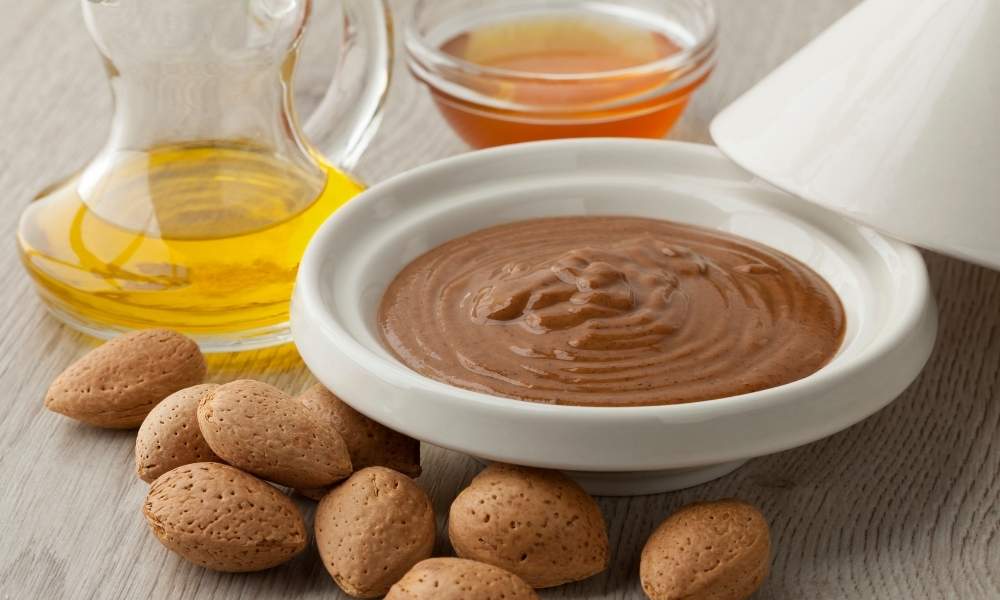
What’s behind the name? Amlou is a classic Moroccan dip made with almonds, argan oil, and honey.
It is usually eaten for breakfast. Argan oil is very expensive because of the process of making it: argan is very laborious.
The closest substitute is walnut oil, but you can also use olive oil if you prefer. Amlou is bright, and you can find darker versions on the internet. How to eat it? Just dip the bread in it and enjoy!
Fried eggs:
Last but not least, fried eggs. Yes, Moroccans also like eggs for breakfast. Although the way we eat, it makes little difference. First of all, no bacon, sausage, or anything like that.
You can eat eggs without meat at all, or Moroccans can serve you a traditional charcuterie called Khlii (or Khlea).
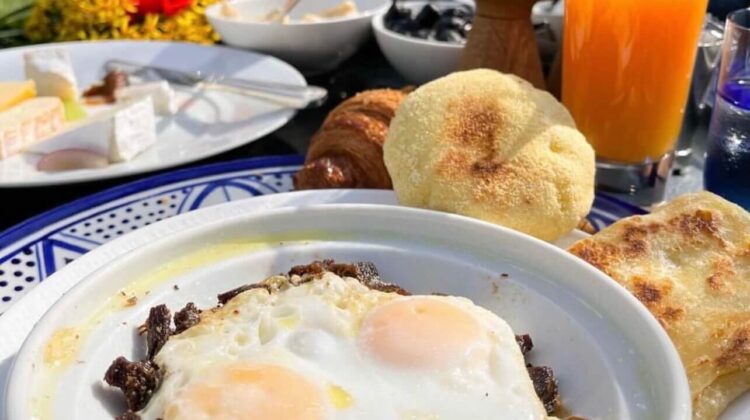
It is made with seasoned lamb or beef that is sun-dried for several days and then cooked in animal fat, oil, and water. Khlii can be stored at room temperature for up to two years. Moroccans enjoy it with fried or scrambled eggs.
But don’t forget to season the eggs with cumin and break the yolks with bread. Oh, and add olives on the side. This is the Moroccan way of eating omelets!
Bisara

In Winter, Moroccan breakfasts take on a heartier note with the addition of Bissara, the Moroccan split pea soup. This thick and velvety soup, crafted from cooked and blended split peas infused with cumin, garlic, and paprika, offers a warm and comforting start to the day.
Drizzled with olive oil and often accompanied by Moroccan bread, Bissara reflects both the resourcefulness of Moroccan cuisine and the cultural embrace of hearty, flavorful dishes during the colder months.
What drinks do Moroccans have for breakfast?
Mint tea remains the most important drink on the Moroccan breakfast table. It is a pure classic. You can easily make it at home.
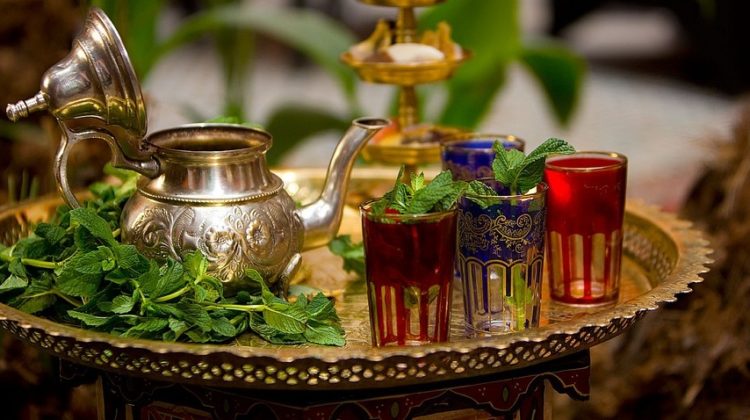
All you need is green tea beans, fresh mint, and sugar. Lots of sugar! However, you may not use mint, as you may not use sugar. It is entirely up to you!
Moroccans can’t do without fresh orange juice, either. Other juices are also popular, but orange juice is certainly the most popular. By the way, the juice is sweet. But again, it depends on you and your taste.
That said, Moroccans can have other drinks for breakfast, such as coffee, milk, hot chocolate, cappuccino… As I mentioned, it depends on the person’s taste.